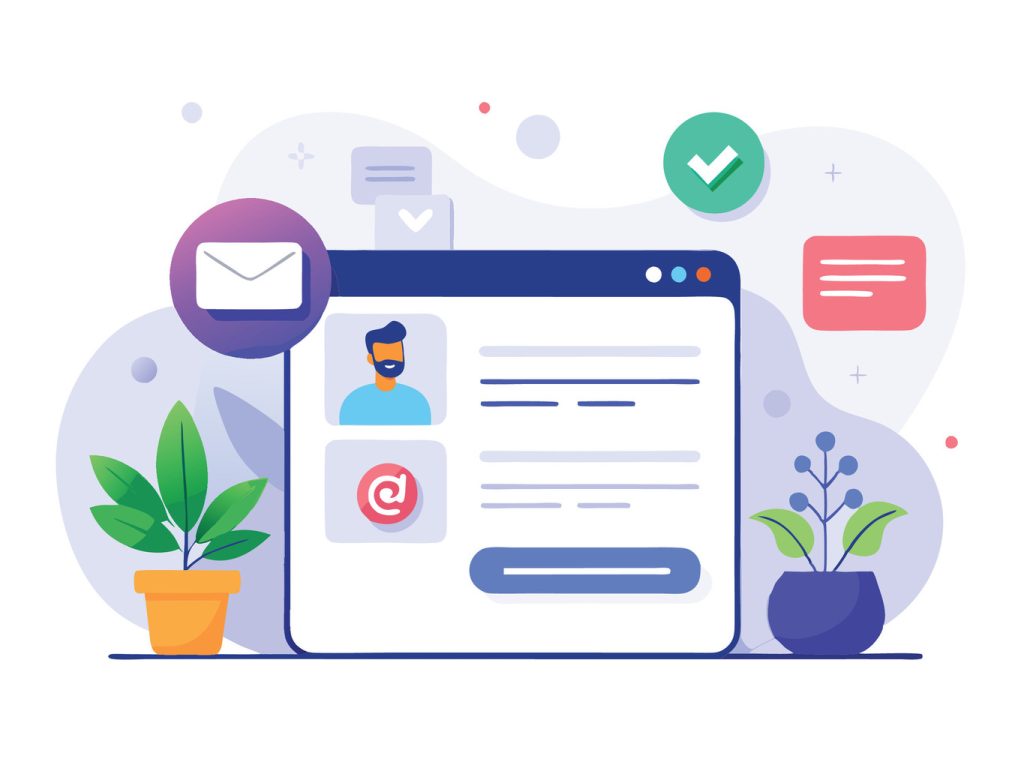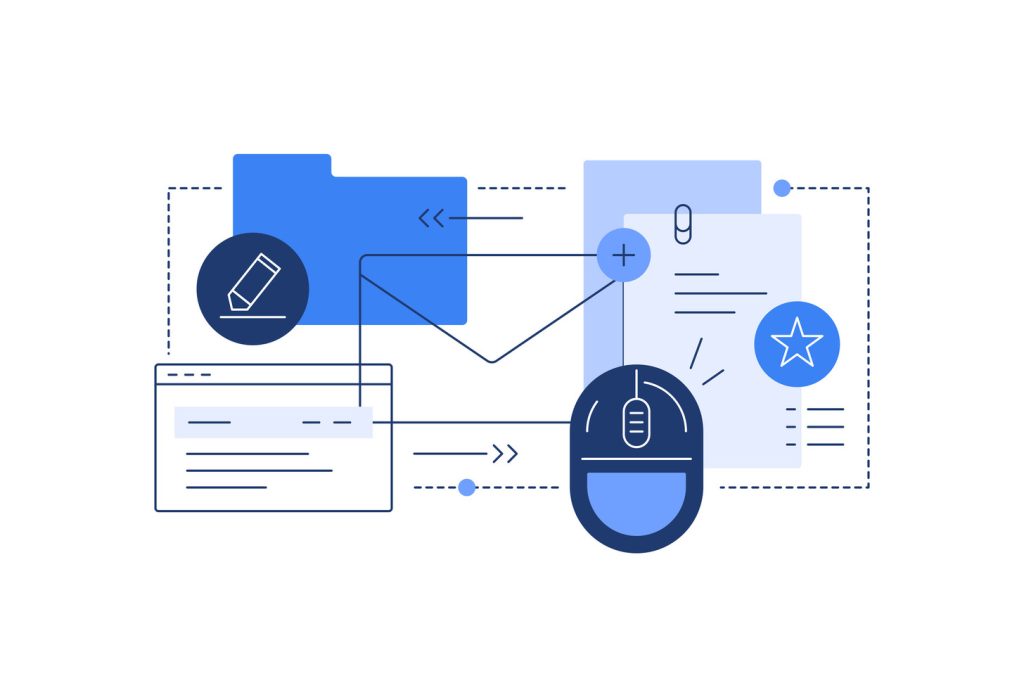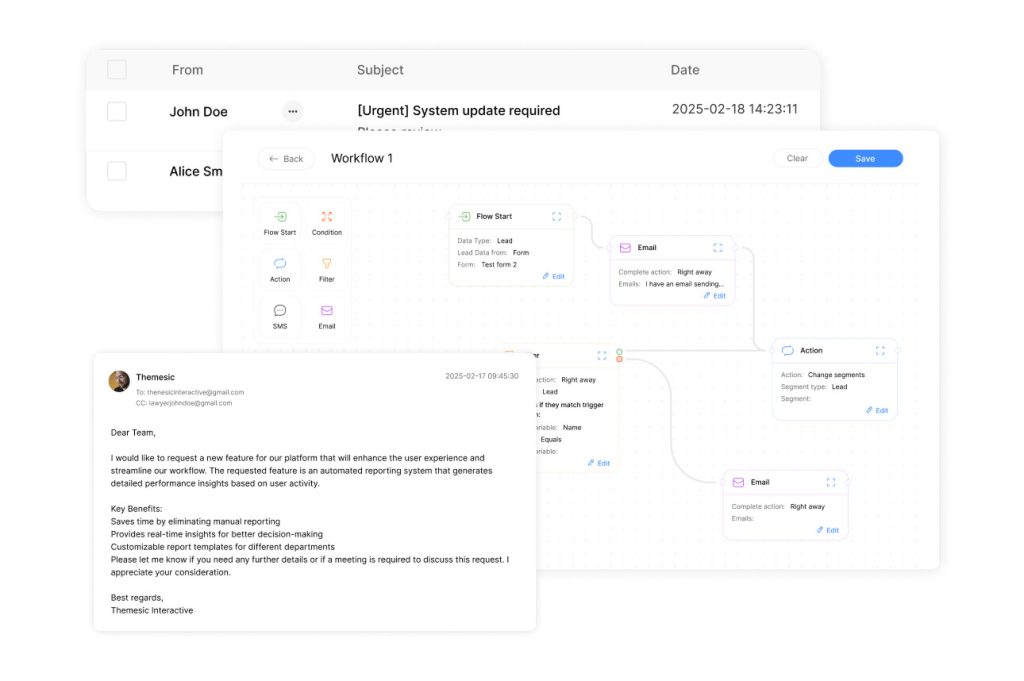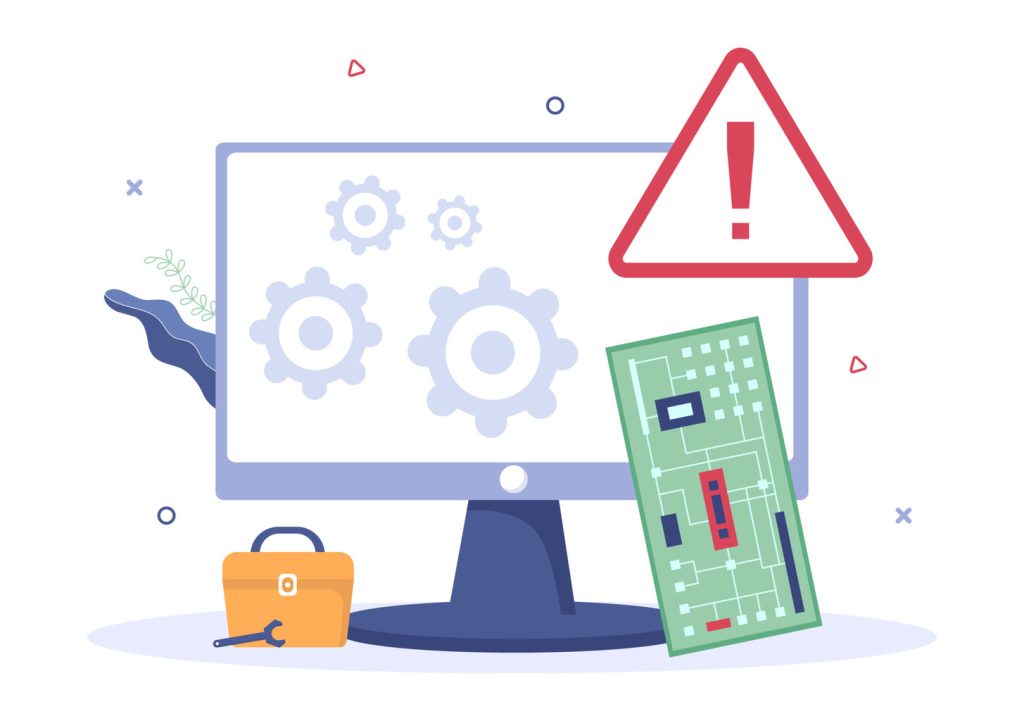How to Create a Ticket From Email: Expert Tips

Modern customer service teams face growing demands for rapid, organized responses. Automated email-to-ticket systems solve this challenge by converting unstructured messages into actionable workflows. These tools capture critical details like attachments, contact data, and inquiry context without manual intervention.
Organizations adopting this approach see 30% faster response times on average compared to traditional email management. Structured ticket formats ensure no request slips through cracks, while centralized dashboards let teams prioritize urgent issues. This method also reduces repetitive administrative tasks, freeing agents to focus on complex problem-solving.
Effective implementation requires aligning platform configurations with existing support infrastructure. Security protocols must protect sensitive customer data during automated transfers. Integration with CRM systems maintains continuity across communication channels, creating unified service histories.
Forward-thinking businesses use these solutions to maintain consistent service quality during peak volumes. Automated categorization routes inquiries to specialized agents, while real-time analytics identify recurring issues. This strategic approach transforms reactive support into proactive relationship-building.
Key Takeaways
- Automated systems reduce response times by eliminating manual data entry
- Centralized dashboards improve issue tracking and prioritization
- CRM integration ensures seamless customer experience across channels
- Security configurations protect sensitive information during automation
- Real-time analytics enable proactive service improvements
Introduction to Email-Based Ticket Creation
Customer support teams now leverage intelligent systems to transform unstructured messages into actionable workflows. These solutions automatically convert incoming correspondence into organized cases, eliminating manual sorting while maintaining service quality. Industry reports show 47% faster inquiry resolution when using automated processing compared to traditional methods.
Advanced platforms analyze message content in real-time, capturing sender details and attachments without human intervention. This structured approach ensures consistent handling across all communication channels. Support teams gain centralized access to historical interactions, enabling personalized responses even during high-volume periods.
| Traditional Process | Automated System | Improvement |
|---|---|---|
| Manual data entry | Instant field population | 89% time reduction |
| Decentralized tracking | Unified case management | 74% fewer oversights |
| Basic archiving | Searchable audit trails | 63% faster retrievals |
Proper configuration remains critical for success. Organizations must align authentication protocols with existing infrastructure while mapping data fields to ensure accurate case creation. Robust systems automatically escalate urgent matters based on content analysis, maintaining service standards during operational peaks.
These solutions also generate actionable insights through built-in analytics. Teams identify recurring issues and optimize response strategies, transforming reactive support into proactive relationship management. When implemented strategically, automated workflows become competitive differentiators that drive customer loyalty.
Understanding the Ticket From Email Process

Automated workflows convert customer messages into trackable support cases seamlessly. Systems like LogMeIn Resolve demonstrate this by generating cases when messages reach designated helpdesk addresses. The original subject becomes the case title, while message content forms the summary—auto-generated communications with specific headers get filtered automatically to maintain system integrity.
Specialized platforms monitor configured addresses 24/7, analyzing incoming correspondence through layered processing. Header data extraction captures sender details and timestamps, while content parsing separates core inquiries from signatures or reply chains. This structured approach ensures agents receive clean, context-rich case details without manual cleanup.
Key system capabilities include:
- Intelligent detection of existing case references to prevent duplicates
- Format preservation across text, HTML, and mixed-content messages
- Spam filtering that blocks 98% of irrelevant correspondence
Advanced algorithms maintain conversation threads within case histories, enabling teams to track complete interaction timelines. Routing rules direct messages to appropriate departments based on content analysis—critical for organizations handling 500+ weekly inquiries. Real-world implementations show an 83% reduction in duplicate entries compared to manual processing methods.
Security remains paramount during automated data transfers. Enterprise solutions encrypt sensitive information while maintaining compliance with data protection standards. When configured properly, these systems become self-optimizing tools that improve accuracy through machine learning patterns.
Essential Email Client Considerations
Selecting the right tools forms the foundation of efficient support workflows. Enterprise teams using solutions like LogMeIn Resolve achieve seamless case generation by sending messages to designated helpdesk addresses. This process demands careful evaluation of communication platforms to maintain system reliability.
Choosing the Right Email Client
Robust messaging platforms directly impact automation success rates. Enterprise-grade clients offer superior integration with ticketing systems through standardized protocols. These solutions maintain formatting consistency across devices while handling attachments and encoding automatically.
| Email Client | Key Features | Integration Score |
|---|---|---|
| Microsoft Outlook | Custom headers, enterprise security | 98% compatibility |
| Gmail Workspace | AI filtering, team collaboration | 95% compatibility |
| Mozilla Thunderbird | Open-source flexibility, add-ons | 89% compatibility |
Configuring Email Settings for Support
Proper setup ensures messages convert accurately into support cases. Technical teams must align SMTP/IMAP configurations with ticketing system requirements. Mobile clients need additional testing to verify attachment preservation and response tracking.
- Enable TLS encryption for all incoming/outgoing messages
- Standardize “Reply-To” address formats across departments
- Implement two-factor authentication for admin accounts
Organizations that unify client configurations reduce troubleshooting time by 41%. Security protocols must match ticketing system capabilities to prevent processing errors during automated transfers.
Step-by-Step Guide to Creating Tickets from Email

Streamlined ticket generation starts with optimized email composition practices. Support teams achieve maximum efficiency when messages follow standardized formats that automated systems can process accurately. This approach minimizes manual adjustments while ensuring critical details transfer seamlessly into case management platforms.
Preparing Your Email for Ticket Creation
Clear subject lines serve as the foundation for effective categorization. Agents process inquiries 42% faster when titles precisely describe issues like “Billing Dispute – Account #12345” versus generic headers. Message bodies should open with context: product versions, error codes, or timeline details that clarify the problem’s scope.
Structured formatting preserves readability during conversion. Use headings to separate questions from background information, and bullet points for multi-step error descriptions. Attachments require careful naming conventions—”Error_Screenshot_May2024.png” aids faster reference compared to ambiguous filenames.
Pre-built templates ensure customers provide necessary details upfront. These frameworks guide users to include system specifications, reproduction steps, and impact assessments. Quality checks before sending prevent miscommunication and reduce back-and-forth clarification requests.
Configuring Subject Lines and Message Bodies
Automation tools map email subjects directly to case titles, making specificity crucial. Include keywords like “Urgent” or “Feature Request” to trigger priority routing rules. Avoid vague phrases like “Help Needed” that delay proper categorization.
Message content becomes the case summary, so prioritize logical flow. Start with the core issue, followed by troubleshooting steps already attempted. Use italics for critical details and hyperlinks for reference materials. Systems preserve line breaks and lists, enabling agents to scan complex reports efficiently.
Standardized signatures with contact information and case reference numbers maintain professional consistency. Teams using these practices report 67% fewer misrouted inquiries and faster first-response times across all support tiers.
Mapping Email Data to Ticket Fields
Intelligent systems transform raw messages into structured support cases by mapping specific data points. Platforms like iTop demonstrate this by linking message components to case fields automatically. This eliminates manual data transfer while maintaining context and customer details.
Setting the Case Title and Description
Subject lines become case titles, giving agents immediate context for prioritization. Message bodies populate descriptions with original formatting, including hyperlinks and bullet points. Accurate mapping reduces agent prep time by 55% compared to manual copy-paste methods.
Default Values and Automatic Field Mapping
Systems extract sender addresses to identify customers and route inquiries correctly. When messages lack required details, predefined defaults fill mandatory fields like priority levels or service categories. Advanced configurations can parse signatures and headers to assign departments or urgency ratings.
Validation checks ensure mapped data meets format standards before case creation. Teams configure custom rules to match business needs, such as extracting account numbers from specific message sections. These safeguards maintain system integrity while handling 1,000+ daily requests.
Organizations using dynamic mapping report 72% fewer data entry errors and faster resolution times. Regular audits ensure field associations stay aligned with evolving support workflows and customer communication patterns.
Leveraging Automation Tools for Email Ticketing

Advanced automation reshapes how teams manage customer inquiries by converting unstructured messages into structured workflows. Leading platforms eliminate manual sorting while maintaining data integrity across diverse communication channels. This strategic approach ensures consistent service quality even during unexpected demand spikes.
Using LogMeIn Resolve for Streamlined Processing
LogMeIn Resolve demonstrates the power of intelligent automation by generating support cases directly from designated inboxes. Its GoPilot AI enhancement analyzes message content to assign categories and set priorities automatically. The platform preserves original formatting across HTML and plain-text correspondence while maintaining attachment integrity.
Implementing iTop’s Mail Automation Solution
iTop Mail to Ticket Automation v3.8.2 offers robust mailbox scanning capabilities through IMAP or OAuth 2.0 connections. The system creates new cases and updates existing ones based on configurable parsing rules. Built-in error handling and retry mechanisms ensure reliable processing across multiple monitored accounts.
| Feature | LogMeIn Resolve | iTop Automation |
|---|---|---|
| Processing Method | Direct address monitoring | Multi-mailbox scanning |
| AI Categorization | Dynamic priority assignment | Rule-based parsing |
| Error Recovery | Manual intervention options | Automated retry protocols |
| Security Compliance | Enterprise-grade encryption | OAuth 2.0 support |
Both solutions integrate with existing infrastructure while providing centralized management dashboards. Teams using these tools report 79% fewer manual data entry tasks and improved response accuracy. Regular system audits help maintain alignment with evolving support needs and security standards.
Handling Attachments and Inline Images
Effective digital correspondence management requires precise handling of visual elements and documents. Modern platforms streamline this process by automatically integrating files into support workflows while maintaining security and accessibility.
Optimizing File Management
Advanced systems like iTop transform message attachments into organized case components. These tools preserve original file formats while automatically filtering redundant elements like signature graphics. Embedded visuals display directly within case descriptions, providing immediate context for agents.
Intelligent duplicate detection identifies recurring files across messages. This prevents clutter without sacrificing critical evidence. Size optimization features adjust large images to practical dimensions, balancing storage efficiency with diagnostic clarity.
Security protocols validate attachments during processing. Approved file types proceed to encrypted storage, while suspicious formats trigger alerts. Configurable limits ensure compliance with organizational data policies without manual oversight.
Inline graphics maintain their positioning when converted from HTML messages. Automatic resizing adapts images for different viewing devices while retaining essential details. Support teams report 58% faster issue resolution when visual context remains intact through automated processing.
Preview capabilities let agents assess files without downloading them. Version tracking and secure access controls further enhance productivity. These features combine to create a streamlined workflow where attachments become assets rather than obstacles.
Troubleshooting Ticket Creation Issues

Even robust systems face challenges requiring methodical problem-solving approaches. Technical teams must address processing failures quickly to maintain operational continuity and customer trust.
Common Errors and Auto-Generated Email Challenges
Platforms like LogMeIn Resolve automatically filter messages containing “auto-submitted: auto-generated” headers, preventing system alerts from flooding support queues. Trial versions often lack this capability, requiring full license upgrades for complete functionality. Key challenges include:
- Authentication failures due to expired credentials or protocol mismatches
- Malformed messages breaking automated parsing rules
- Configuration conflicts during multi-platform integrations
iTop’s solution keeps problematic correspondence accessible for retries while maintaining original timestamps. This approach ensures no customer inquiry gets permanently lost during system updates.
Strategies for Effective Debugging
Technical teams should adopt layered diagnostics to resolve processing issues. Start by analyzing error logs for patterns, then verify server connectivity through these steps:
- Test SMTP/IMAP connections using command-line tools
- Validate OAuth token permissions and expiration dates
- Review message headers for unexpected formatting
Proactive monitoring tools track success rates for emails processed, triggering alerts when metrics fall below thresholds. Regular configuration audits prevent 68% of common processing failures before they impact users.
Advanced Configuration Options for Email Ticket Systems
Secure and efficient email integration hinges on advanced protocol configurations. Enterprise platforms like iTop prioritize flexible connection methods to adapt to diverse infrastructure needs while maintaining strict security standards. These systems require careful setup to handle high-volume processing without compromising data integrity.
IMAP, OAuth, and Other Connection Protocols
Modern solutions support IMAP for reliable synchronization with mail server environments. This protocol enables persistent folder management and real-time updates across devices. Organizations using Gmail or Microsoft Azure benefit from OAuth 2.0 authentication, which eliminates password storage risks while granting secure API access.
| Protocol | Key Advantage | Use Case |
|---|---|---|
| IMAP | Multi-device sync | Enterprise email systems |
| OAuth 2.0 | Token-based security | Cloud platforms |
| SSL/TLS | Encrypted transfers | Sensitive data handling |
Interactive configuration wizards simplify complex setups. Guided workflows test connections before deployment, reducing errors by 62% compared to manual methods. Systems requiring PHP 7.1+ leverage these tools to establish encrypted channels through custom ports and certificate validation.
Multi-mailbox monitoring allows simultaneous tracking of departmental addresses. Connection pooling ensures stable performance during network fluctuations, while automatic retries maintain processing continuity. Detailed logs provide visibility into system health, enabling proactive maintenance and protocol adjustments.
Regular updates keep configurations aligned with evolving security standards. Teams implementing these options achieve 89% faster troubleshooting and seamless scaling during demand spikes. Proper protocol management transforms technical setups into strategic operational assets.
Integrating Email Ticketing with Customer Support Systems

Seamless integration between messaging platforms and case management tools elevates operational efficiency. Unified systems ensure inquiries flow directly into support pipelines without manual transfers. This connectivity maintains context while enabling real-time updates across departments.
Freshdesk Email Setup and Best Practices
Freshdesk simplifies connections with major providers like Gmail and Microsoft Office 365. Teams configure dedicated addresses to auto-generate cases while preserving sender details. Key steps include:
- Enabling two-way sync for reply tracking
- Setting spam filters to block irrelevant messages
- Creating routing rules based on content keywords
Advanced authentication protocols prevent unauthorized access during data transfers. Teams using these practices achieve 91% first-contact resolution rates for email-based requests.
Custom Mail Server Configurations
Enterprise environments often require tailored setups for legacy or specialized systems. Technical teams establish secure IMAP connections while mapping custom fields to case templates. Office 365 integrations benefit from OAuth 2.0 token security and automated certificate renewal.
Regular audits verify proper synchronization between mail servers and support dashboards. Organizations report 68% faster escalation times after optimizing these configurations. Centralized logging provides visibility into processing errors, enabling proactive system adjustments.

